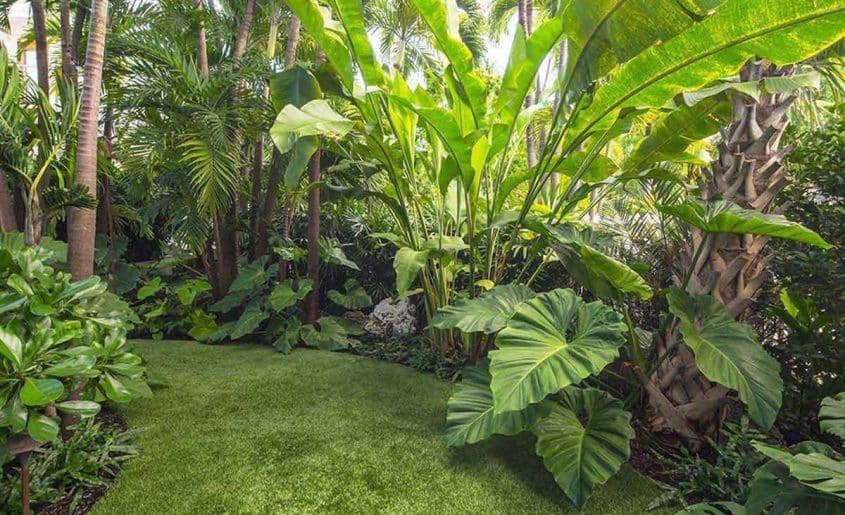It is often said that landscape designers have a bag of tricks when landscaping for smaller gardens, and whilst we accept that what they can achieve is wonderous, it is more down to their skills and experience than any hocus pocus or magic wands.
The skills and experience we talk of come from not just their early days’ training but often through years of designing landscaping for gardens and public areas of all sizes and shapes, as well as fulfilling the wishes of their clients. As a result, they will have followed several core landscape design principles on each garden’s design, and if you carry on reading, we will highlight seven of these used when landscaping smaller gardens.
Larger Plant Beds
When amateurs try to design a garden, if it is a small one, they will try to make the plant beds as small as possible. However, although it might seem counter-intuitive, it follows proven landscape design principles if you make the plant beds larger. This can be done by extending fully to the outer walls and other boundaries, with the effect being to make the garden seem more significant.
Upscaling
This is the first of two opposite approaches, however, the great news is that both of them work in smaller garden designs. Upscaling means that you increase the scale of as many features within the garden as you can as this gives the sense that the garden is larger than it is. Examples include using wide decking boards instead of thin ones, large concrete pavers instead of bricks for patios and walkways, and wide fencing panels.
Downscaling
The ‘Ying’ to upscaling’s ‘Yang’ is to downscale as many items within the garden so that there seems to be a greater quantity of them and thus the sense is created of a larger garden, but in the opposite way to how upscaling works. So, you might use extra thin decking, thin fence panels, small bricks or stone for walkways, and plant ten small shrubs, instead of three large ones, for example.
Go Bold
If you can create an environment where the primary thought on the mind of anyone in your garden, including yourself, is not its small size, then you have a winner. This is best achieved by including several bold features within your landscape design. The simplest way to achieve this is by using bright, bold, and unmissable colours such as bright orange, pink, and even luminous green. Oversized cushions and ornaments can also support your quest for boldness.
Vertical Features
One of the most commonly followed landscape design principles is using vertical space when the horizontal space is limited. This manifests itself in dozens of ways such as shelving for small plant pots, trellises, wall climbers, stepped walkways, and multitiered lawns and plant beds.
Create A Focal Point
This is another landscape design technique that seeks to divert attention away from the size of the garden and instead focus that attention on a focal point within the garden. What that focal point might be is entirely up to you with popular options including a fountain, a small pond, a seating area, a small patio, or a plant bed in the centre of the garden.
Make Every Inch Count
One of the mistakes we often see within poorly designed small gardens is that there are too many wasted spaces that could be utilised to increase a garden’s beauty and functionality. If you have any unused spaces, fill them with a garden ornament or a seat. Also, use plants to fill spaces, especially perennials which offer all-year-round beauty.

